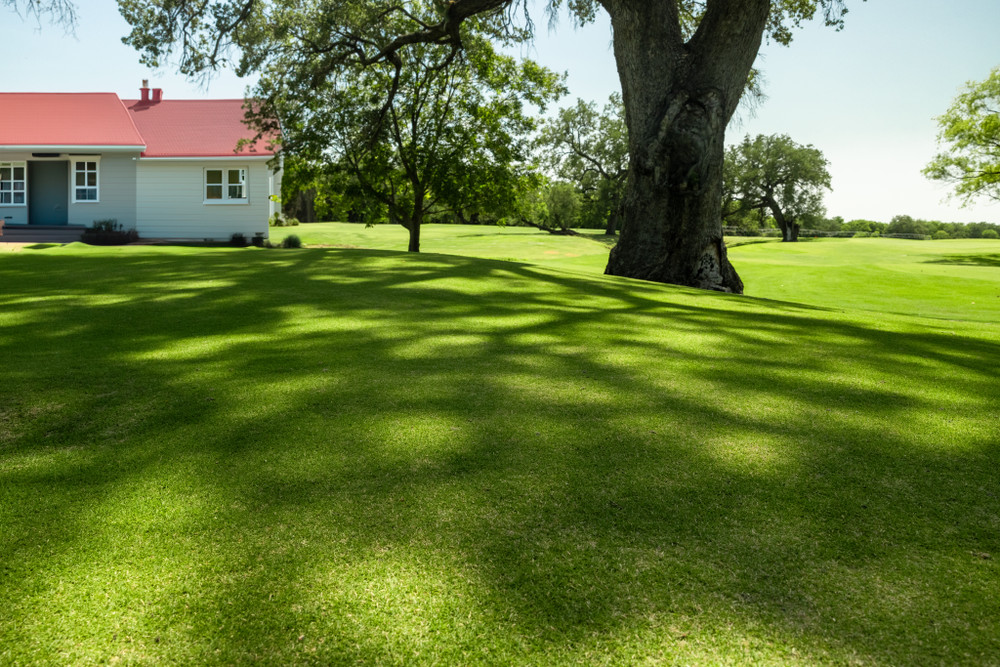Zoysia Sod Guide: History, Varieties, Benefits & Lawn Care Tips for Homeowners
Posted by Farm2Yard on Aug 11th 2025
Zoysia Sod Guide: History, Varieties, Benefits & Lawn Care Tips for Homeowners
If you’ve ever walked barefoot across a perfectly manicured lawn that felt like a lush green carpet, there’s a good chance you were standing on Zoysia sod. Known for its dense growth, striking appearance, and remarkable durability, Zoysia grass has earned a reputation as one of the most desirable warm-season turf options for homeowners—especially in the South.
In this complete homeowner’s guide, you’ll learn about Zoysia’s history, defining characteristics, the most popular Zoysia grass varieties, and why it’s a top choice for shade and sun. You’ll also find expert Zoysia lawn care tips to keep your yard looking like a showpiece year-round.
A Brief History of Zoysia Grass
Zoysia grass originated in the Far East, native to parts of Southeast Asia, Japan, and China. It was named for Austrian botanist Karl von Zois (Wikipedia). Early varieties such as Zoysia japonica were introduced to the U.S. in the late 19th and early 20th centuries for testing in warm, humid climates (Texas A&M AgriLife).
For decades, Zoysia sod was a novelty—sold in mail-order ads in Parade Magazine and other publications. Homeowners would plant Zoysia plugs in existing lawns, letting them spread over time. Some of those original plugs, like the ones USA Sod’s CEO Jeff Hill planted as a child, are still thriving today—a testament to the grass’s longevity.
Defining Characteristics of Zoysia Sod
Zoysia stands out among warm-season grasses for a unique mix of traits:
-
Dense Turf Structure – Once established, Zoysia sod forms a thick mat that naturally suppresses many common lawn weeds (Sod Solutions).
-
Blade Options – Available in fine, medium, and wide-blade varieties to match your lawn aesthetic.
-
Shade Tolerance – Performs better in partial shade than most warm-season grasses (University of Maryland Extension).
-
Drought Resistance – Deep roots allow it to handle dry spells better than St. Augustine, though Bermuda roots go deeper (UF IFAS Extension).
-
Foot Traffic Durability – Stands up well to play and moderate sports use.
-
Height Versatility – Can be mowed short like a putting green or kept at 2–3 inches for a cushioned feel (Kansas State University Extension).
Popular Zoysia Grass Varieties
While there are dozens of cultivars, most fall into three main groups:
Emerald & Empire Zoysia
-
Blade Type: Fine to medium.
-
Color: Rich emerald green.
-
Best Use: A refined look that still offers durability. Thrives in full sun and light shade.
-
Note: Slower growing than Bermuda, but may still require twice-a-week mowing in rainy seasons (Sod Solutions).
Palisades Zoysia
-
Blade Type: Wide.
-
Best Use: The go-to Zoysia variety for shade—excellent where trees limit sunlight (Texas A&M AgriLife).
-
Bonus: Dense turf and lush look even in partial sun.
Zeon & Zorro Zoysia
-
Blade Type: Ultra-fine, golf-course quality.
-
Best Use: Premium lawns with a manicured, putting-green appearance. Popular for both residential lawns and select golf fairways (UF IFAS Extension).
Benefits of Zoysia Sod for Homeowners
-
Showpiece Appearance – Thick, uniform texture stands out in any neighborhood.
-
Natural Weed Control – Dense growth shades out weed seedlings (University of Maryland Extension).
-
Lower Pest Pressure – Less prone to heavy insect damage compared to some grasses (Texas A&M AgriLife).
-
Versatility Across Climates – Grows well from the mid-Atlantic to Florida and across the Gulf Coast (Kansas State University Extension).
-
Durability – Perfect for yards where kids and pets play.
-
Maintenance Flexibility – Choose a short, golf-style cut or a taller, plush lawn feel.
Considerations Before Installing Zoysia Sod
-
Upfront Cost – Slightly higher than Bermuda or St. Augustine, but pays off in longevity (Sod Solutions).
-
Slower Establishment – Requires patience and proper care to fill in.
-
Winter Dormancy – Turns brown in cold months; use fall pre-emergent to block winter weeds (University of Maryland Extension).
-
Mowing – Needs regular mowing during peak growth.
Zoysia Lawn Care Tips
-
Mowing – Keep most varieties between 1–2 inches; fine-blade Zoysia like Zeon can be cut shorter with a reel mower (Texas A&M AgriLife).
-
Watering – Water deeply and infrequently to promote strong root growth.
-
Fertilizing – Apply balanced fertilizer during the growing season; avoid excess nitrogen (UF IFAS Extension).
-
Weed Control – Use pre-emergent herbicide in fall and spot-treat in summer.
-
Aerating – Core aeration once a year improves air and nutrient flow (Kansas State University Extension).
-
Pest Watch – Keep an eye out for mole crickets and fungal issues in humid climates.
Is Zoysia Grass Right for You?
Jeff Hill, CEO of USA Sod, says Zoysia sod is perfect for homeowners who want a premium look and a yard that stands out. It’s best for:
-
Lawns with a mix of sun and shade.
-
Families needing a durable play surface.
-
Homeowners wanting a “country club” feel in their own yard.
-
Golf enthusiasts who want that fairway look at home.
Bottom Line: If you want a beautiful, low-weed, durable lawn that makes your property pop, Zoysia sod delivers. With the right variety and proper care, it can be the centerpiece of your landscaping for years to come.

